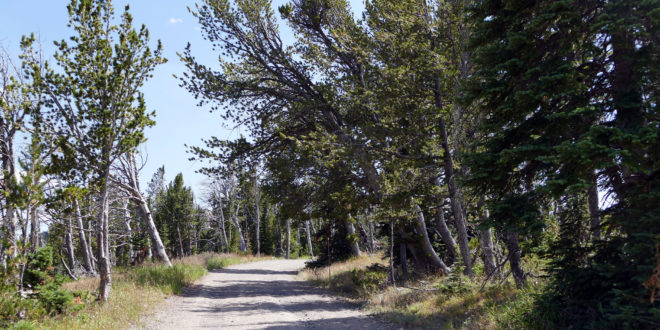Researchers at the University of Idaho have identified how climate change led to an outbreak of beetles in Yellowstone’s whitebark pine forests.
Since the early 2000s, mountain pine beetles have killed whitebark pine across millions of acres in and around Yellowstone National Park, prompting concerns from NPS officials and conservationists over the future of Yellowstone’s forestland.
The study, published in Ecological Applications, predicts that temperature increases enabled pine beetles to proliferate and sets the stage for future outbreaks. The study also outlined ways in which forest managers can protect whitebark pines in the future—especially as climate change pushes temperatures up. From a UI press release:
“By the middle of this century, most years will be as suitable for beetle outbreaks as in the 2000s. It’s where we’re headed,” said Polly Buotte, a postdoctoral researcher in the UI College of Science Department of Geography who led the study, which was supported by the Northwest Climate Science Center and also included researchers from the USDA Forest Service and the University of Wisconsin, Madison.
Whitebark pine is an iconic and ecologically important tree to the Greater Yellowstone Area. It’s an important source of food for grizzly bears, squirrels and seed-eating birds called Clark’s nutcrackers, and it provides shelter for other trees at high elevations.
Mountain pine beetle epidemics in whitebark pine are no surprise. Models developed in the 1990s by study co-author Jesse Logan, a retired Forest Service researcher, predicted that warming temperatures would lead to more outbreaks. However, the UI-led project sought to identify exactly why.
The researchers created a statistical model with data about whitebark pines, mountain pine beetles and climate in the Greater Yellowstone Area during 1985-2009, including the outbreak years 2000-2009.
Researchers concluded three climatic factors contributed to beetle outbreaks: warmer winter minimum temperatures, higher average fall temperatures, and lower summer precipitation levels. Each factor, on their own, contributes favorably to mountain pine beetle ecology, but together they’re especially fruitful.
Researchers previously believed, for instance, that whitebark pines grew at too high an elevation for beetles to survive in winter, but warming winter averages negates this conclusion. Warmer fall temperatures ”synchronize” beetle populations so they hatch and spread at the same time, effectively creating a seasonal onslaught. Finally, with less summer precipitation, whitebark pines are consistently drought-stressed, makes them even more susceptible to beetles.
The researchers also created a model for future pine beetle attacks in the coming decades—and concluded climate is essential to understanding the outbreaks and how to mitigate damages on the future. From a UI press release:
“This adds pretty strong evidence for the need to include climate as a consideration for managing whitebark pine,” said co-author Jeffrey Hicke, an associate professor of geography at UI.
Planning for potential beetle outbreaks is vital to the success of efforts to preserve the whitebark pine in the Greater Yellowstone Area, Hicke and Buotte said. For example, Forest Service researchers have bred whitebark pines that resist blister rust, another threat to the species. But managers should consider where beetle outbreaks may soon occur when deciding where to plant them, Buotte said. Forest managers should look for cold microclimates, such as in cold air drainages, which could be a prime spot for replanting because they may remain cold enough to kill the beetles, at least for many years.
Buotte and Hicke are continuing their research into the interplay of climate change, whitebark pines and mountain pine beetles. They are working to identify the ripple effects of beetle outbreaks, identify genetic differences in trees that survive infestation, and quantify how much human-caused climate change has contributed to beetle outbreaks.
UI associate professor of geography John Abatzoglou also contributed research to the study.
 Yellowstone Insider Your Complete Guide to America's First National Park
Yellowstone Insider Your Complete Guide to America's First National Park





